 Information Technology Project
Information Technology Project in Slovenian Schools
 Information Technology Project
Information Technology Project
Prof. Dr. Vladimir Batagelj,
University of Ljubljana, Department of Mathematics,
Jadranska 19, 61111 Ljubljana, Slovenia
tel: 386 (61) 1766 672 fax: 386 (61) 217 281
e-mail: Vladimir.Batagelj@uni-lj.si
WWW: http://vlado.mat.uni-lj.si/
Prof. Dr. Vladislav Rajkovi~,
University of Maribor, Faculty of Organisational Sciences,
Pre{ernova 11, 64000 Kranj, Slovenia
and J. Stefan Institute, Ljubljana
tel: 386 (64) 222 804 fax: 386 (64) 221 424
e-mail: Vladislav.Rajkovic@ijs.si
Keywords: Integration of informatics, Curriculum, Teachers education, Resources, Networks
Abstract: In 1994 the Slovenian government started the six years project Information Technology in Slovenian Schools. The aim of the project is to rise the level of computer supported informatisation mainly in elementary and secondary schools. It should contribute toward problem oriented, more efficient and more friendly school. The project deals with providing appropriate hardware and software, teachers training and organisation. A special emphasis is laid on the research and development approach. Some strategic subprojects concerning teaching methods, information technology and networks, use of knowledge base systems and multimedia are going on.
From 1977, each year a competition in computer science for secondary school students is held (9). In 1988, the first International Computer Science Olympiad was held in Nova Gorica, Slovenia. Summer schools for gifted children are also regulary organised.
In 1987, the Logo project started. We produced our own version of logo - LogoS (11- 13). TV series about logo were produced in 1991.
The shift to PCs in the computerisation of schools in 1988 was the task of the Ra~ek (Duck) Project. It resulted in some software projects for schools (for example computer aided Timetable), series of books (Ra~ek library: MS-DOS, Turbo Pascal, dBASE, LaTeX, Derive, WordStar, Windows), and specialized journal for new information technologies Nit. The emphasis was on penetration of computers into other subjects together with appropriate teacher's training.
In 1992, Petra Project started the informatisation of the 5th class of elementary schools. In the selected subjects, i.e., Language, Arts and Technical education, the role of information technology in achieving a new quality in teaching was experienced (14). Other subjects (Biology, Geography, History,...) are under development. In 1994/95 175 elementary schools took part in the project.
Speaking in terms of previous experiences, it has to be concluded that the computing power met real teaching needs only at the beginning of nineties with multimedia and networking capabilities. The user-friendly software encouraged teachers to prepare their own teaching materials.
Today, answers to the following questions should be given:
Individual potentials of teachers and students should be activated by providing a new creative environment. The information technology should be presented as a challenge for better and more creative work.
In 1994, the Slovenian government started the new six years project RO - Information Technology in Slovenian Schools.
The information technology offers the possibility and opportunity to increase man's capabilities. The way we live and work together has changed. It enables us to do things we haven't been doing before. The use of human knowledge is intensified.
The project is to create possibilities for informatisation both on the teaching and the organisational level. Computers in schools should support teaching goals and curriculum integration.
The stepwise approach based on creation of "potential differences" will be used. This should motivate teachers for the research and development approach. The project approach also contributes toward an efficient spending of funds.At the end of the project, the informatisation should become an integrated part of the educational system.
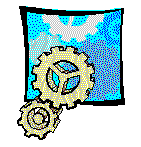
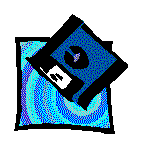 Hardware and Software
Hardware and SoftwareAs already mentioned, standardisation foresees minimal standards and tries to follow changes in information technology development. Presently (Dec. 1995) minimal standards for the classroom equipment require at least 486 PC, 8 Mb RAM, colour VGA monitor, and LAN support.
Different equipments are needed at different places in schools, such as teacher's presentation set, computer equipment for teachers meeting room, laboratories, library and off-site activities (notebooks). A special emphasis is on the network (Internet) connections.
School is constantly faced with the problem of ageing of its equipment. The life-time of information technology is even shorter. As a possible solution of the problem we propose an upgrading and renewal model. After two years school computers should be sold, either to teachers or pupils, for example, for 30% of the price.
Besides hardware, a selection of standard software tools and packages (OS, text formatter, drawing package, spreadsheet, data base, ...) was provided for all schools. In spring 1995, Microsoft donated its main products to our schools. They were distributed on CD - at this occasion we equipped all our schools with at least one CD drive. We are strongly supporting the use of the legal software in our schools.
A Catalogue of educational resources is planned to be established on the network to provide information (including evaluation results) about existing products (all types of programs, datasets and media materials, ...) and their distribution. In this way we would like to encourage local software development and exchange of the software and other materials produced by teachers and students. Modern authoring systems enable teachers to create their own educational multimedia materials. To support this, we have to provide them with a lot of free raw material (data, documents, pictures, sounds, videos,...).
There is a serious problem of lack of teacher's skills to manage the available software and hardware. Apart from the teacher's preservice and inservice training, we approach this problem with some organisational solutions (distribution of installed software on CD) and with gradually introducing IT technicians in schools.
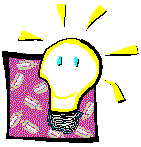 Teacher's Training
Teacher's TrainingIt was as early as in the mid eighties that at the University we started with a 150 hours basic inservice course in computer education for teachers. At present, courses for specialised topics of the information technology are also given by other institutions (Catalogue: 50 different courses - 10000 participants). A vital segment is also teachers selfeducation which should be supported with various materials (textbooks, manuals, guidelines,...) and services (consulting, mail lists, network conferences,...).
A promising organisational approach is cascade training in which research-based schools play an important role.
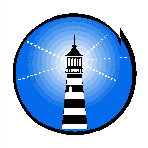 Research-Based Schools
Research-Based SchoolsThe role of research-based schools is to offer prototype solutions for other schools in the neighbourhood and/or in the assigned subject field. The solutions are developed in the joint projects with universities and other institutions and firms. Their contributions toward informatisation of subject curricula are very important.
Research-based schools explore the strengths and weaknesses of IT and serve as a lighthouse, with a special emphasis on didactics and methodology.
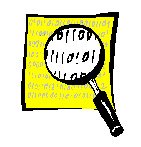 Research and Development
Research and DevelopmentAs already mentioned, the co-operation with Universities and Research Institutes is of vital importance. International collaboration also takes place. We are involved with the Colos project and in some Tempus projects.
There is a standard procedure applied for submission, surveillance and evaluation of subprojects. Evaluation of proposals is based on a multicriteria approach carried out by a committee of reviewers. Their report serves as a basis for the final decision by the project steering committee.
Essentially, all project activities will emerge from the informatisation of curriculum with the aim to enrich the process of teaching and learning. Networking and multimedia will provide a new framework for communication and open new frontiers of knowledge activities.
The research and development approach will disclose advantages and disadvantages of IT. Though we are fully aware that IT does not always offer all the answers to educational problems, its undisputably indispensable contribution to the quality of life in schools will be fully explored.